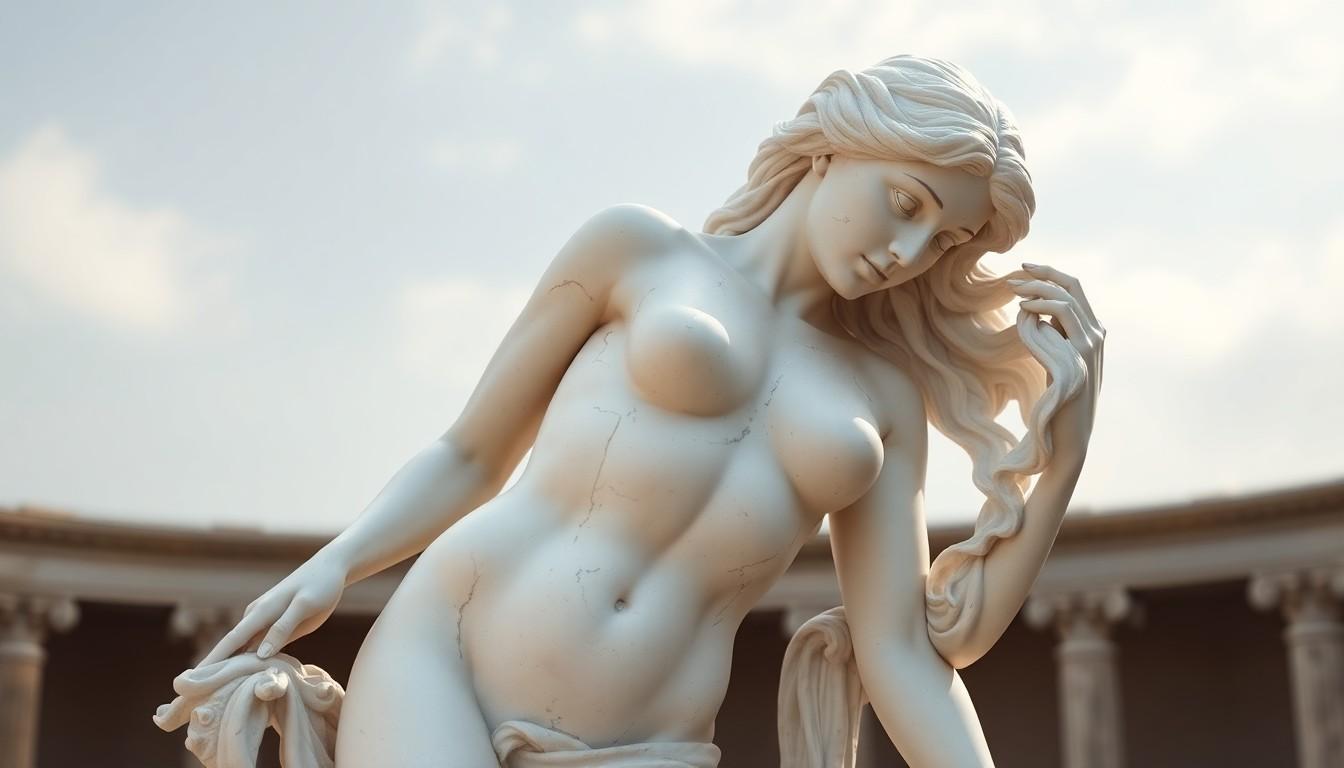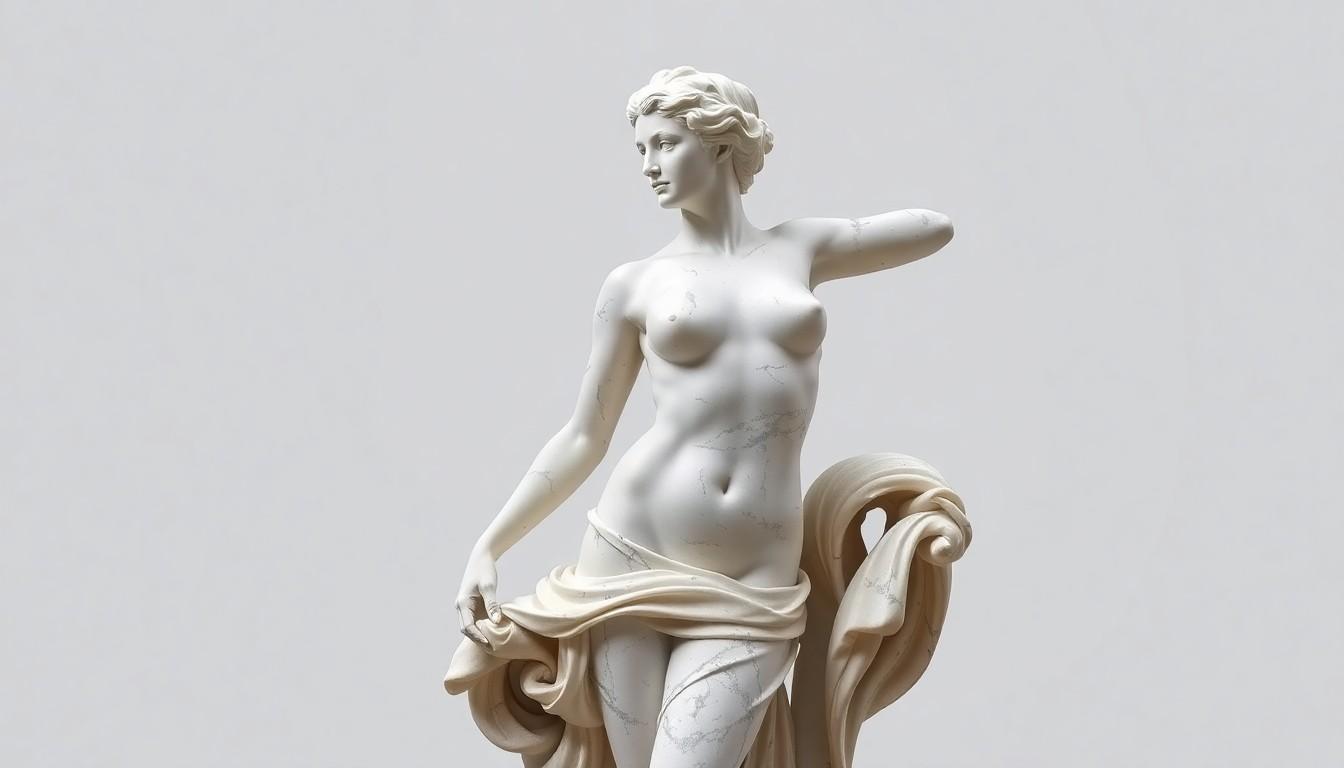
Aphrodite Greek Sculpture Woman Body: Timeless Beauty and Modern Feminine Influence
When it comes to beauty and artistry, nothing quite captures the essence of femininity like the Greek sculptures of Aphrodite. These stunning representations of the goddess of love and beauty showcase the idealized female form, turning heads and inspiring admiration for centuries. It’s like the ancient Greeks had a secret beauty filter that transcends time, leaving modern artists scratching their heads in awe.
But why should anyone care about a bunch of marble and stone? Well, these sculptures are more than just pretty figures; they embody cultural values and artistic mastery that continue to influence today’s standards of beauty. So grab your toga and join the journey as we explore how these timeless works of art celebrate the female body in all its glory, proving that some things—like true beauty—never go out of style.
Aphrodite Greek Sculpture Woman Body
Greek sculptures of Aphrodite exemplify the idealization of beauty and femininity. These pieces often showcase a range of artistic styles, including classical, Hellenistic, and Roman influences. Master artisans utilized various materials such as marble and bronze to create lifelike forms that highlight proportion and movement.
Themes prevalent in these sculptures involve love, beauty, and desire. Artists conveyed different aspects of Aphrodite’s character through poses and expressions, providing depth to their representation. Each piece invites viewers to contemplate the emotional and spiritual dimensions of femininity.
Notably, the Venus de Milo stands as one of the most famous representations, characterized by its missing arms and exquisite detail. This artwork serves as an iconic symbol of ancient Greek aesthetics, influencing countless artists across generations. The refined curves and intricate drapery position it as a hallmark of sculptural mastery.
Cultural values are intricately woven into these sculptures. They reflect the societal ideals of beauty prevalent in ancient Greece, portraying women not just as individuals but as embodiments of divine qualities. Through their portrayal of Aphrodite, artists expressed the admiration for female beauty and its power.
Collectors and scholars recognize these sculptures not merely as artifacts but as reflections of the era’s artistic legacy. Exhibition spaces often feature them prominently, demonstrating their lasting impact on contemporary art and beauty standards. The enduring quality of Aphrodite’s representations ensures she remains a pivotal figure in artistic discourse.
Historical Significance
Greek sculptures of Aphrodite hold notable historical significance, reflecting ancient cultural values and artistic achievements. These representations transcend mere aesthetics, revealing deeper insights into societal ideals regarding femininity and beauty.
Origins of Aphrodite Representations
Aphrodite’s depictions in art trace back to ancient Greece around the 7th century BCE. Initially, these portrayals emphasized her divine nature and connection to love. During the Archaic period, sculptures emerged as stylized forms, marked by rigid postures and formalized features. As art evolved, the Classical period introduced more nuanced representations that captured grace and realism. The Hellenistic period further transformed these depictions, showcasing emotional depth and dynamic poses. Each phase reflects cultural shifts in perception, illustrating how artists interpreted the goddess through changing artistic paradigms.
Key Sculptures Through History
Several key sculptures highlight the evolution of Aphrodite’s representation. The Venus de Milo, created around 100 BCE, epitomizes Hellenistic artistry with its naturalistic form and intricate details. Its missing arms contribute to its enigmatic allure, inviting diverse interpretations. Another significant work, the Aphrodite of Knidos by Praxiteles, gained fame for portraying the goddess in a sensual and vulnerable manner, breaking traditional norms. This piece established a standard for future representations of feminine beauty. Additionally, the statue known as the Capitoline Venus illustrates Roman influences, merging Greek aesthetics with Roman ideals. Collectively, these sculptures signify the intertwining of myth, artistry, and cultural ideals, marking Aphrodite’s enduring impact on history and contemporary art.
Artistic Characteristics
Aphrodite sculptures exemplify remarkable artistic qualities. These works exhibit a profound understanding of the human form, emphasizing the beauty of femininity.
Material and Technique
Sculptors often utilized marble and bronze, allowing for intricate details and smooth textures. Marble, favored for its luminosity, enabled artisans to create lifelike skin tones and delicate features. Bronze offered flexibility in designs and postures, a choice that facilitated dynamic representations. Attention to craftsmanship reflected the artistry of periods like Classical and Hellenistic, showcasing advanced techniques such as contrapposto. This technique introduced realism, making figures appear as though they could breathe and move. Crafting these masterpieces required not only skill but also a deep appreciation for the subject matter, linking cultural significance with aesthetic appeal.
Iconic Features of the Woman Body
Aphrodite sculptures reveal distinct features that define ideal beauty in ancient Greece. Curved forms emphasize softness and sensuality, creating a harmonious balance in proportions. Sculptors used meticulous detail to portray flowing hair and elaborate drapery, accentuating the female figure’s grace. In several representations, hands and feet often reflect delicate positioning, enhancing elegance. The goddess’s facial expressions convey a sense of allure and confidence, inviting viewers to engage emotionally. Each sculpture tells a story, merging physical attributes with symbolic meanings, making it a celebration of both beauty and femininity.
Cultural Impact
Aphrodite sculptures significantly influence various artistic and cultural realms. Their representation of femininity speaks universally across time, resonating with modern audiences.
Influence on Art and Literature
Artists and writers consistently draw inspiration from Aphrodite’s beauty and allure. Classical texts, such as Homer’s “Iliad,” depict her influence on human emotions and decisions. Artistic endeavors throughout history reference her form, portraying idealized beauty. The Renaissance saw artists like Botticelli embracing Aphrodite in works like “The Birth of Venus,” establishing her as a muse. This trend continues today, with contemporary art and literature continually evoking her essence, reaffirming her status as an archetype of love and beauty.
Aphrodite’s Symbolism in Society
Aphrodite embodies various societal ideals, representing love and beauty in multiple cultures. She symbolizes not only physical attractiveness but also the complexities of desire and affection. Modern interpretations often associate her with empowerment and self-expression. Various movements in feminism adopt her image to challenge traditional beauty standards. Her characteristics serve as a reminder of the importance of embracing one’s identity, and her influence permeates discussions around body positivity and self-acceptance, ensuring that her legacy endures in contemporary society.
Modern Interpretations
Modern interpretations of Aphrodite’s image continue to resonate, reflecting evolving standards of beauty. Artists today frequently draw inspiration from classical sculptures, infusing contemporary perspectives into their creations.
Contemporary Sculptures and Adaptations
Contemporary artists frequently reinterpret Aphrodite through various mediums, including sculpture, painting, and digital art. Innovative approaches highlight her form in materials such as glass or recycled materials, emphasizing sustainability. Some creators focus on body positivity, reshaping Aphrodite’s silhouette to reflect diverse body types. Others experiment with abstract styles, evoking her essence while challenging traditional representations. These adaptations often incorporate modern themes like empowerment and self-acceptance, resonating with today’s audiences. Many exhibitions feature these new works, showcasing the enduring relevance of Aphrodite in artistic discourse. Overall, these contemporary expressions illustrate Aphrodite’s continued influence on beauty and femininity.
Expressions of Beauty
Aphrodite sculptures embody a timeless celebration of beauty and femininity that transcends cultures and eras. Their intricate craftsmanship and emotional depth invite viewers to engage with the ideals of love and desire. As artists continue to reinterpret her image, they reflect contemporary values while honoring the legacy of ancient artistry.
These works not only capture the essence of the female form but also challenge and redefine beauty standards in today’s society. Aphrodite’s influence remains a powerful force in the ongoing dialogue about body positivity and self-acceptance. Through her enduring presence in art and culture, she inspires a deeper appreciation for the complexities of femininity and the diverse expressions of beauty.
